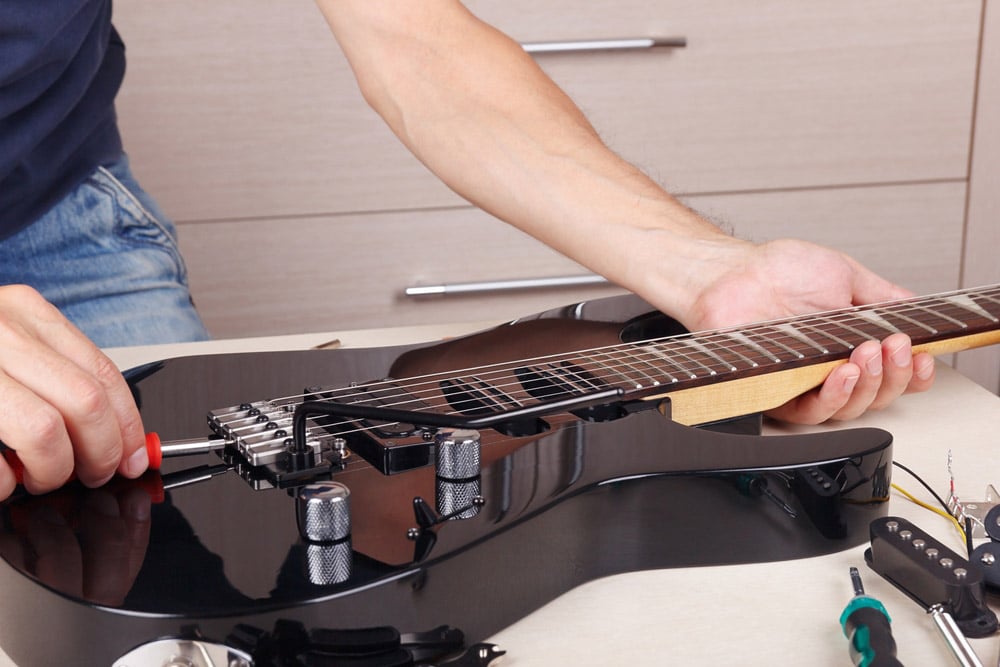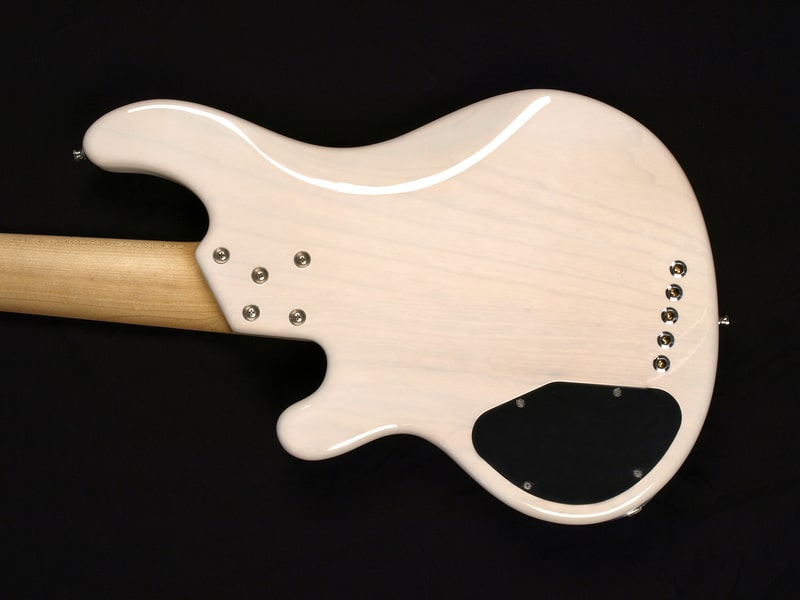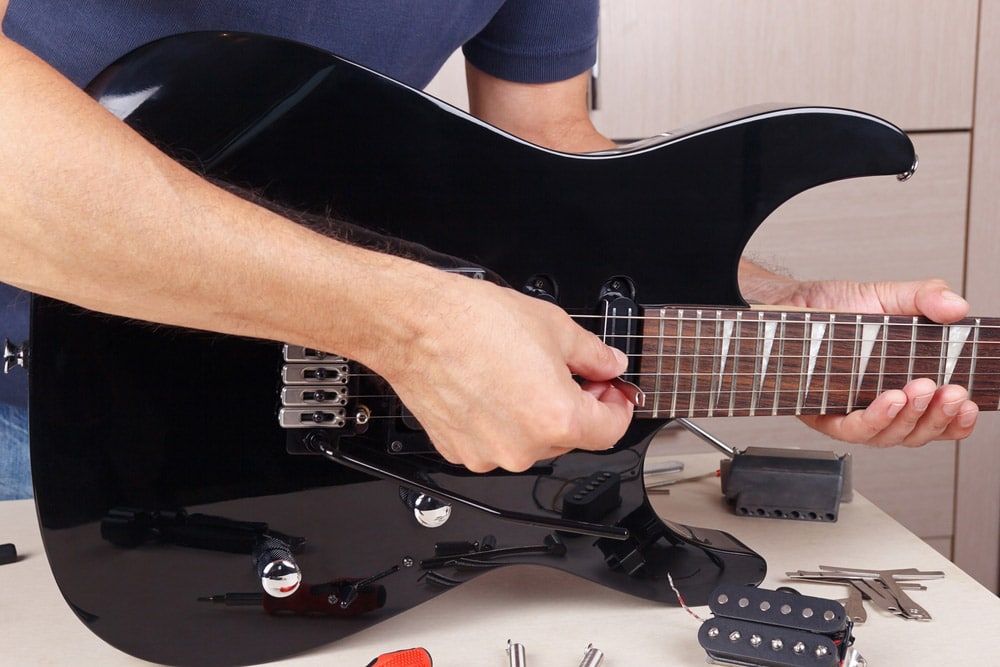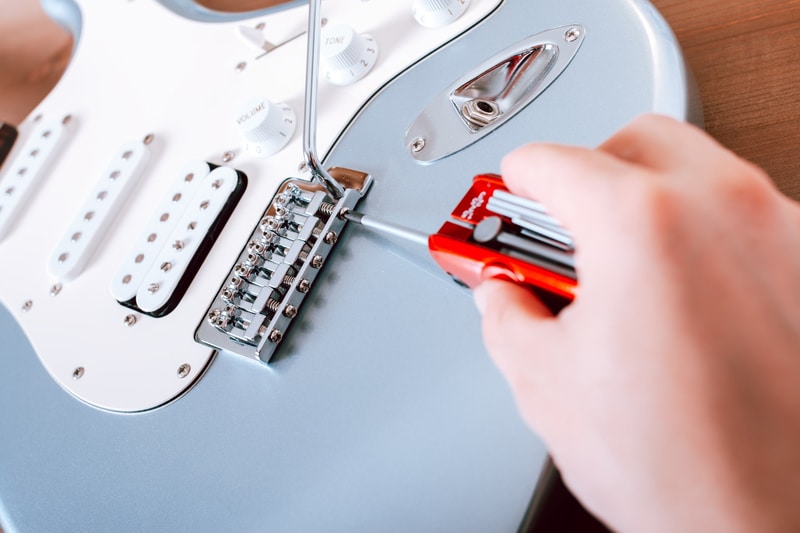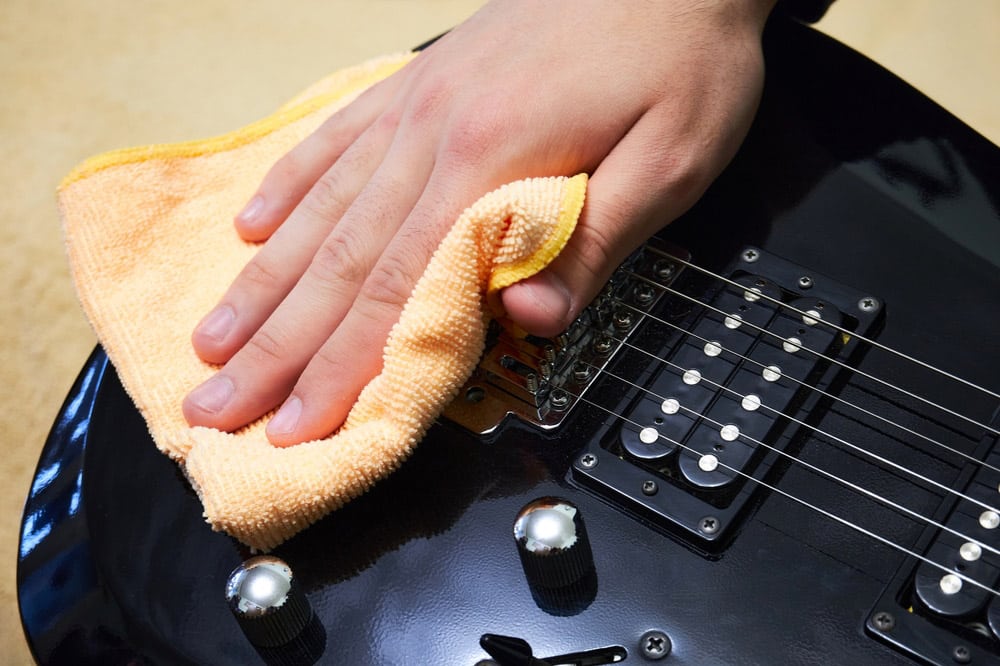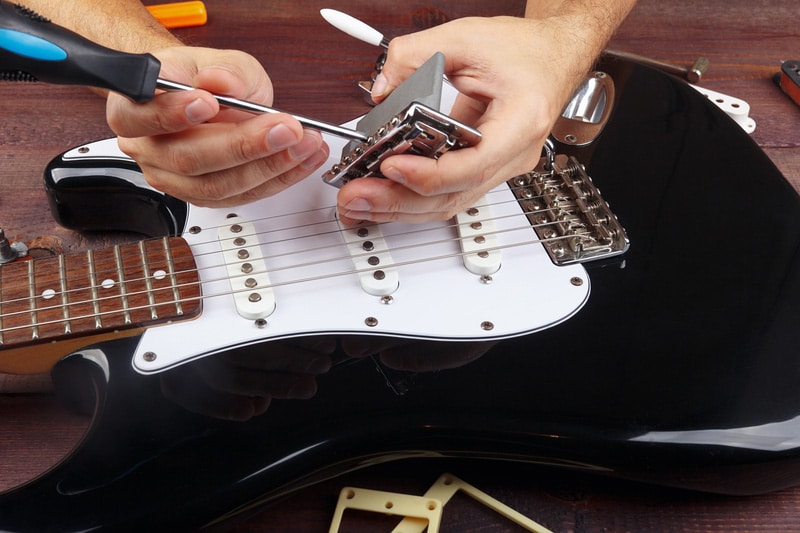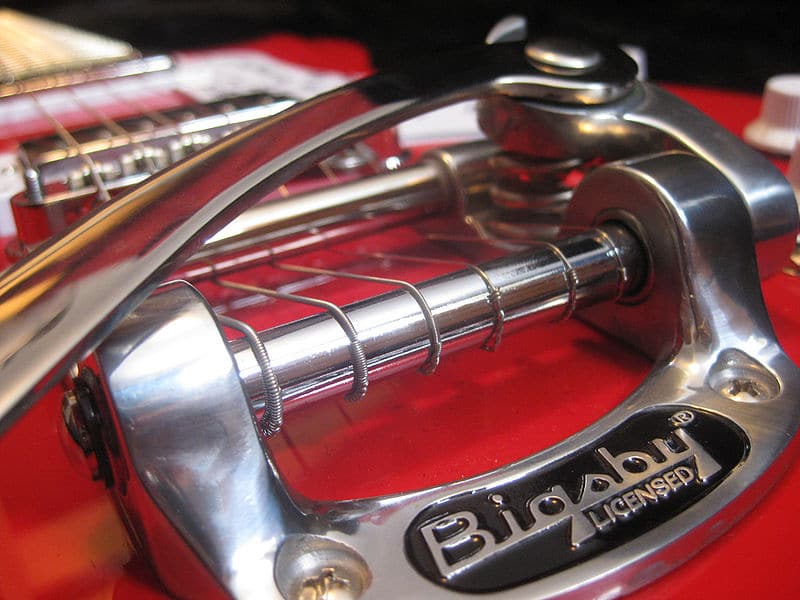
Bigsby is a well-known brand with top-notch tremolo arms that promise the best sound and captivating vibrations. It’s a great choice for people who like chord sustaining and subtle dipping notes. Similarly, it’s widely used by people who play rock and roll guitar as they can add faster and more aggressive expressions to the tunes.
On the other hand, you can also loosen up the strings to play the soft tunes. However, there are some tuning problems that adversely impact playability.
Bigsby Tremolo Tuning Problems And Their Solutions
- Leaving It For Extended Periods
If your tremolo is losing the tuning constantly, it’s because you haven’t used the tremolo for a long time. So, if you have connected the tremolo to the guitar and haven’t used it for a long time, it’s recommended that you tune it again before playing.
Also, before you put away the guitar for a week or more, it’s recommended that you loosen up the tuners to prevent tuning issues.
- Compatibility
This Bigsby tremolo is designed for the flat-top solid body guitars as you can attach the tremolo by using four screws (it’s connected on top of the guitar). Since the majority of guitars have a flat top, there are low chances of incompatibility issues. In particular, it works fine with Rickenbacker 325s, Les Paul Jrs, SGs, and Telecasters.
However, if you are using a different guitar, the tremolo won’t work well because of compatibility issues and will go out of tune.
- Balancing Issues
It is common for guitarists to use the tilted forward positioning for a tremolo, but if it’s causing balancing issues, you must check the setup. It’s recommended to remove two middle screws as two screws perform well (there are four screws) and eliminate the balancing issues.
However, if you prefer more screws, it’s better to add one screw at a time to make sure the sound and tremolo are balanced. The second method to fix the balancing issues is to opt for parallel balancing. This is because when the tremolo is balanced parallel to the guitar body, it returns to the pitch pretty well.
- Stability Issues
In case you like your tremolo to come back hard to the guitar’s body and think that it provides suitable tuning stability, but there are stability issues, you must check the setup. To begin with, you must double-check the setup and make sure the knife edges don’t have cuts and are sharp. In addition, the knife edges must be un-marred.
In particular, you must check the knife edges because the worn-out knife edges can also result in stability issues. To check if the knife edges are deformed, you have to remove the springs and strings to take a look at the bridge. Make sure that the edges that connect with the post aren’t mashed or worn out.
You can opt for a fine file to clean the edges and add some polish to mask the scratches left behind by the file. The second solution that you can try includes partially blocking the tremolo travel around the guitar’s back. For this purpose, you can add a wooden piece around the rear cavity as well as on the front side of your tremolo block.
As a result, it improves the stability as the block will stop against the wooden piece rather than bridge-to-body being a stopping point. The third solution is to check the nuts; you must inspect the locking nuts because they must be tight and secure as loose nuts can shift, resulting in stability issues.
In case the nuts are loose, tighten them while holding the neck. In addition, before you lock down the nuts, you must stretch the strings. Also, don’t forget to adjust the string retainer, and the tuners must have sufficient wrapping to make sure the strings are sitting flat on the locking nut’s base.
The last solution is to install a stabilizer as it can help stabilize the tremolo. However, installing and setting up the stabilizer is challenging, so it’s best to take your guitar and stabilizer to a music shop for professional installation.
- Not Enough Tension
When you strike the springs but there is not enough tension, you must determine the placement of the springs. In particular, the springs need to be slightly open when you are using the normal balance and make sure the coils are slightly apart to make sure the springs have sufficient tension.
Keep in mind that if there is no tension, the springs are more likely to shift, resulting in tuning error. Also, if you have to open the springs, make sure you remove the springs and re-balance them.
Secondly, you must be careful about the spring orientation, and symmetrical orientation is the only solution – this orientation makes sure that the springs are open.
Thirdly, you need to be careful about the spring type. In case you are using a modern and two-point bridge, you must opt for black strings, while silver springs are recommended for a vintage bridge. That’s because every spring has a different tension level.
So, it’s best that you contact Bigsby or consult the manual to determine the right type of springs. Last but not least, the springs must be in optimal condition because worn-out springs fail to produce and retain tension.
- Unable To Tune
If you are unable to tune the tremolo, it’s recommended that you check the string trees and remove them temporarily, as it helps track down the tuning. In case removing the string trees improve the tuning performance, you must clean and polish the tremolo’s bottom side and make sure you opt for height spacers while replacing the trees.
The string trees must not be screwed right down the headstock’s face as it results in an excessive break angle around the nut. Moreover, it adds friction to the system. On the other hand, if the string trees are already screwed down to a headstock, you must opt for new trees set.
- Too Many Bends
If you are playing and the tremolo is producing too many bends, you have to check the tremolo path and reduce the friction. For this purpose, you must inspect all the string trees and nuts – you can use 1000-grit sandpaper for filing and polishing the string trees’ bottom.
In addition, you can wrap the sandpaper around the string as it helps polish the nut’s slots. Secondly, you have to remove the hard corners from the saddles as the string slot’s rear side should be rounded. However, for filing and polishing, you will have to disassemble the bridge. Once the filing is done, you must remove the scratches.
There are various abrasive cords available in the market that help with the polishing. In fact, the cords are available in multiple sizes, so you can clean the smallest areas around the nuts.
- Tremolo Not Returning Properly
If the tremolo fails to return, you must raise the bridge as much as possible as it helps improve the strings’ break angle. As a result, the tension is increased, and the tremolo will return properly.
However, if this doesn’t work, you have to reverse the screws that are placed around the tremolo to make sure the screw heads are below the top plate (you will have to remove the screws and tighten them again in a reverse direction). Reversing the screws helps increase the clearance.
- Extensive Break-In Period
The primary tension spring on your Bigsby tremolo is heavy, and the break-in period is obvious before the tremolo starts operating smoothly. To speed up the break-in period, you must remove the primary spring and compress it for a day or two.
In addition to this, it’s better to opt for heavy strings as they help balance the immense tension. In particular, you can opt for 12s, 11s, or 10s strings.
The Bottom Line
Tremolo is one of the most important additions to the guitar setup, and it can improve the sound. However, it often creates tuning problems but they are quite easy to fix. In case you still have some tuning issues, call Bigsby customer support!

